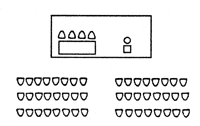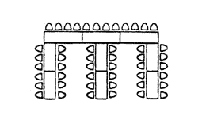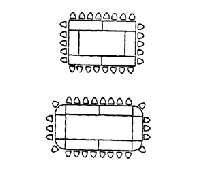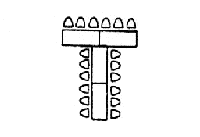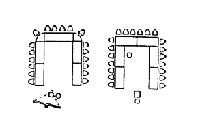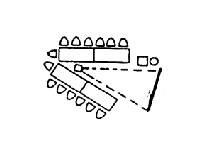On-campus residences (summer only)
Shown here are 9 popular seating configurations:
1. Auditorium/TheatreAppropriate for meetings of no more than 2 hours, this set-up is popular for large groups, provided note-taking is limited. Typically there is a main centre aisle with narrower side aisles. The first row of seats shouldn’t be less that 10 feet from the stage, speaker, or projection screen. |
|
2. BoardroomDouble tables form a unit 5 feet across with as many units long as required to seat the group. Five-feet half rounds can be used to make oval arrangements. |
 |
3. Buzz groupsUseful for small discussion groups, classroom seating is altered by having every other row turn and face each other. |
|
4. ClassroomThis style is preferred for meetings lasting longer than 2 hours or when participants must work with papers or materials. Narrow tables (1.5'x 6-8') are frequently used. Two feet is a comfortable work area; therefore 3 may be seated at a 6-foot table, and so on. |
 |
5. E-shapeWhen a large group is required at the head table, the e-shape works well. |
|
6. Hollow square or circleUsed to equalize all members of a large group. |
|
7. T-shapeUseful for panel discussions, the t-shape is not as popular as the u-shape, which provides better visibility. |
|
8. U-shape or horseshoeProbably the most popular set-up for meetings. |
|
9. V-shapeAn alternative to the u-shape, the v-shape is helpful for viewing visuals. |
|
